—Joshua Kaufman
Books about Information Architecture or for IAs
“Content Management Bible”
Bob Boiko
There’s a reason why this book is called a bible. This book has been fundamental in helping me understand some gaps I had about content management. Lots of great practical approaches about the life-cycle of content management processes and systems.
Madonnalisa Gonzales-Chan
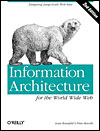 “Information Architecture for the World Wide Web” (Second Edition)
“Information Architecture for the World Wide Web” (Second Edition)
Louis Rosenfeld and Peter Morville
The latest edition of the landmark book on information architecture from a library science perspective. If you need to do some heavy-duty structuring of content, you need this book.
George Olsen
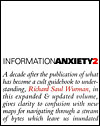 “Information Anxiety 2”
“Information Anxiety 2”
Richard Saul Wurman
This second version will appeal to the conceptual in you as much as it does the practical. Wurman, who coined the phrase “information architect” almost 30 years ago, gives us historical context, as well as a map for what may come next. Complete with a cameo bit of writing from Nathan Shedroff, the book will leave you with tools to make sense of overwhelming amounts of information, no matter what the media.
Liz Danzico
“The Intellectual Foundation of Information Organization”
Elaine Svenonius
Great introduction to various areas of information management, organization, access, and retrieval. Touches on academic and practical issues.
Madonnalisa Gonzales-Chan
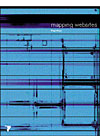 “Mapping Web Sites”
“Mapping Web Sites”
Paul Kahn and Krzysztof Lenk
From the founders of Dynamic Diagrams, this book is a richly illustrated exploration into the process of creating maps and other artifacts for communication. Beginning with the definition of classic maps, the authors cite parallels to information maps used to plot out and communicate a website. Contained in the book are several case studies that show luscious samples of maps, informational diagrams, planning diagrams, process diagrams and topic map diagrams for several websites. The pair also spends a considerable amount of time defining sitemaps with lots of examples that define the breadth of possibilities.
Erin Malone
“Style: Ten Lessons in Clarity and Grace” (Fifth Edition)
Joseph M. Williams
If inconsistent link labels make you cringe and jargon makes you angry, you need to get this book. It provides you with ten elegant strategies for refining and iterating the written word so that it makes sense for your audience. As you read, substitute the words “information architecture” for “writing” and watch the book transform into persuasive strategies to use in everyday IA work.
Liz Danzico
“Thesaurus Construction and Use”
Jean Aitchison, Alan Gilchrist and David Bawden
Need I say more? Very practical information on how to get started on building a thesaurus. Fundamental information in getting started with the standards associated with construction and some considerations for how a thesaurus is applied. I believe it’s a great introduction, but anyone new to this LIS stuff should be cautioned that it may be quite overwhelming.
Madonnalisa Gonzales-Chan
“The Tipping Point”
Malcolm Gladwell
A book for anyone interested in the stickiness of information. A look into what makes information resonate, and what motivates people to pass information on. Gladwell’s examples can be applied to information architecture, design, fashion, cooking, friendships… any situation where social epidemics can have influence.
Liz Danzico
“Unlocking Knowledge Assets”
Susan Conway and Char Sligar
Great case study on building a knowledge management organization system at Microsoft. So maybe the whole book isn’t relevant to you but there is definitely lots to think about on such topics as taxonomy management, search or information retrieval, and building a community of practice. It has definitely given me more thoughts to reflect on for user research from the perspective of search logs and such.
Madonnalisa Gonzales-Chan
Books on Interaction Design and HCI
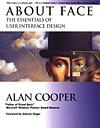 “About Face: The Essentials of User Interface Design”
“About Face: The Essentials of User Interface Design”
Alan Cooper
My first practical introduction to software application and interface design. If anything this book is a really good introduction to the basics of application UIs.
Madonnalisa Gonzales-Chan
This book was one of the first books I got on interface design. Filled with practical advice for a variety of problems encountered in application design. Despite its age (1995) it is still a handy reference if you design software applications.
Erin Malone
“The Art of Human-Computer Interface Design”
Brenda Laurel
Definitely a fundamental collection of articles on HCI before the web. I still recommend it especially for some of the foundation research on HCI.
Madonnalisa Gonzales-Chan
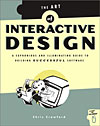 “The Art of Interactive Design: A Euphonious and Illuminating Guide to Building Successful Software”
“The Art of Interactive Design: A Euphonious and Illuminating Guide to Building Successful Software”
Chris Crawford
While this renamed second edition isn’t out yet, I’ve been a fan of Crawford’s writings for years, since his seminal classic, “The Art of Computer Game Design.” He’s devoted years to pondering interactive storytelling, with ideas that have been well ahead of their time. In the meantime you can see his past essays at http://www.erasmatazz.com/Library.html
George Olsen
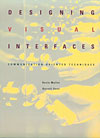 “Designing Visual Interfaces: Communication Oriented Techniques”
“Designing Visual Interfaces: Communication Oriented Techniques”
Kevin Mullett and Darrell Sano
This is one of my favorite books. I have a copy for home and a copy at work. The authors equate the problem solving process for interaction design to the problem solving process of information and graphic design. Unlike the other HCI/Interface books written by software developers for other software developers, this is one of the few books, that as a trained graphic desiger, I could relate to.
Erin Malone
One of the few books on user interface design that explicitly draws on the visual design principles that artists and graphic designers have spent centuries beta testing. While its UI examples are all traditional software (other examples range from currency design to the famous map of the London Underground), it’s a must-read for anyone wanting to understand the principles behind good UI design.
George Olsen
“Human-Computer Interaction” (Second Edition)
Alan Dix, Janet Finelay, Gregory Abowd & Russell Beale
Great textbook introduction to HCI. One of the important textbooks for my own introduction to HCI.
Madonnalisa Gonzales-Chan
“Mind Over Media – Creative Thinking Skills for Electronic Media”
Mark von Wodtke
While at first glance, this book may seem a little dated—the web isn’t even mentioned—it is a book I return to over and over again. This book is filled with various techniques and how-to’s for thinking about creativity, interactivity, hypertext, data models, information design, and perception. There are discussions of how to present and visualize information and ideas—concept mapping, diagramming, metaphor—as well as how to plan the process of creativity in the context of a practical problem to solve. Each chapter builds on the previous and several chapters have a series of exercises at the end to test your learning of the various techniques. This is one of the best books in my library for an interaction designer.
Erin Malone
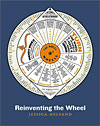 “Reinventing the Wheel”
“Reinventing the Wheel”
Jessica Helfand
Reinventing the wheel brings together an amazing collection of paper wheel charts. On the surface this sounds strange, but these wheels pack in layers of complex information into an easy-to-use compact circular format. The collection ranges from wheels created in the early 1900’s to circular information design from as late as 2001. Each wheel is presented on its own page with a brief description of its history and how the information works. Anyone interested in information design and interaction will treasure this book.
Erin Malone
Books on User Centered Design
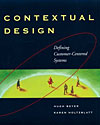 “Contextual Design”
“Contextual Design”
Hugh Beyer and Karen Holtzblatt
After you’ve interviewed users, Beyer and Holtzblatt show you how to turn the information into useful models to analyze the problems and come up with solutions. However, the techniques are geared toward large-scale business process re-engineering projects and typically need to be scaled back for most other projects. Also Beyer and Holtzblatt are a bit weak on the process of coming up with a design.
George Olsen
“Customer-Centric Product Definition”
Sheila Mello
An extremely useful book from the product development field, which has been popularized as the “Voice of the Customer.” Mello provides a detailed method you can use to not only understand user needs, but also prioritize what things to focus on. I particularly like her use of survey research techniques as a way of reality-checking proposed feature sets developed by qualitative user-centered design techniques.
George Olsen
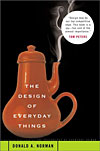 “The Design of Everyday Things”
“The Design of Everyday Things”
Donald Norman
This book is about awareness—awareness that your frustration and grief in using a product may be the fault of the design itself. You are then free to question your interaction with products with objectivity and purpose. If you already know these concepts, Norman’s book empowers you, leaving you a vocabulary to express yourself. If you are still learning, be prepared that you’ll never look at every day objects the same way again.
Liz Danzico
Formerly published as “The Psychology of Everyday Things”, This is the book that everyone calls the “essential text” for designers of any type. The ideas Norman discusses can be applied to so many different fields because it uses examples that everyone encounters in everyday life. If you’re a usability professional and you want your web-illiterate grandmother to understand what you do, read her an excerpt from this book. She might not understand the technical details of your work, but she’ll better understand the everyday concepts of user-centered design.
Joshua Kaufman
“Designing from Both Sides of the Screen”
Ellen Issacs and Alan Walendowski
Co-written by an interaction designer and a software engineer, this book offers the first look at how front-end user experience and back-end technology issues intersect—something we too often ignore. Besides offering some useful guidelines, the authors detail the creation of the instant messaging application and the give-and-take between the front-end and back-end needs during development.
George Olsen
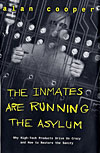 “The Inmates Are Running the Asylum”
“The Inmates Are Running the Asylum”
Alan Cooper
A extremely good overview about why most high-tech products are so frustrating to use and the value of paying attention to user experience. It’s perhaps best at dissecting the issues of corporate politics that user experience architects have to contend with. Cooper gives an overview of his extremely useful personas and scenarios technique but it’s not covered in as much depth as it could be.
George Olsen
“Mastering the Requirements Process”
Suzanne Robertson and James Robertson
One of the most comprehensive books on developing requirements. While it’s written from a software engineering perspective, it goes far beyond technical requirements to consider issues of visual presentation, legal concerns and corporate politics (although it doesn’t cover content at all, due to the authors’ background). It’s quite readable and never pedantic. The bare bones version of the authors’ approach is available online
George Olsen
“The Media Equation”
Byron Reeves and Clifford Nass
There isn’t an experience design professional who doesn’t advocate for the user. We consider social constructs and human experience of our target audience with unflappable resolve. With this book, Reeves and Nass challenge our notion of social constructs. They reveal that there are social relationships not only occurring among people, but between our users and the interfaces they encounter. Find out what happens when an aggressive interface confronts an aggressive human personality.
Liz Danzico
“Software for Use”
Larry L. Constantine and Lucy A. D. Lockwood
Often times densely-written with some really confusing terminology, but packed with ideas that make it well worth wading through. Constantine and Lockwood have some powerful ways of modeling use cases and offer useful specific steps for moving from high-level design down to the design of individual screens.
George Olsen
“User and Task Analysis for Interface Design”
JoAnn T. Hackos and Janice C. Redish
The key to starting the process of good user experience design is understanding the target audience and what they’re trying to accomplish. This book’s strong points are how think about breaking activities into specific tasks and how to go about observing and interviewing users, although the last section offers a good survey of techniques for moving from analysis design. It also has a good chapter on the all-too-often overlooked issue of how to provide documentation and training for users.
George Olsen
![]()
Books on Design
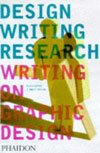 “Design Writing Research”
“Design Writing Research”
Ellen Lupton and Abbot Miller
This collection of essays, divided into three sections, Theory, Media, and History, cover over ten years of critical writing about graphic design, media and design history. The essays range from a look at “Modern Heiroglyphs,” —an essay that accompanied the exhibition Global Signage:Semiotics and the Language of International Pictures at the Cooper Union—, to “Laws of the Letter,” —a look at the history and theory of typography, —to “McPaper,” —an analysis of USA today and the infographics contained therein. The essays are smart, easy to read (they are essays) and cover a wide range of subjects.
Erin Malone
“The Design of Sites”
Douglas K. Van Duyne, James A. Landay and Jason I. Hong
Don’t try to read this cover to cover, it’s not meant to be used that way. Instead the authors present a collection of design issues and potential solutions, similar to the approach Christopher Alexander’s “A Pattern Language” took for architecture. You may not use their advice, but it’s good for crystallizing a nagging issue and jump-starting your thinking about solutions.
George Olsen
 “The Elements of Typographic Style”
“The Elements of Typographic Style”
Robert Bringhurst
This small book is a must have if you spend any time thinking about page design and typography. Despite being geared toward graphic designers and traditional print work, it is also a useful resource for the screen designer. The chapter “Shaping the Page” covers the concept of the Golden Section and the mechanics of creating a well-proportioned page. This information is as applicable on screen as well as in print. New media designers will find this book interesting for it’s historical perspective as well as its practical application.
Erin Malone
“Pentagram: The Compendium”
The Pentagram Partners
A 300-page showcase of one of the worlds best design studios. Published in 1993, you won’t find cutting-edge design, but you will find a stellar collection of graphic, architectural and product design (but no UI design). There are numerous annotations explaining the thinking behind the designs, ranging from brief notes to lengthy essays. While it touches on many graphic design principles, don’t expect an organized textbook on design. Rather it excels at giving you a right-brain gestalt of what design is about.
George Olsen
“The Non-Designers Web Book”
Robin Williams
For having no design background, I really value Williams’ book. She also has other titles related to design in general. Very approachable and full of great examples.
Madonnalisa Gonzales-Chan
Books on Usability
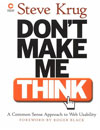 “Don’t Make Me Think: A Common Sense Approach to Web Usability”
“Don’t Make Me Think: A Common Sense Approach to Web Usability”
Steve Krug
Usability without dogma. Witty and to the point, Krug offers useful guidelines for using “advanced common sense” when designing and practical advice for usability testing. It’s also a good book to give to managers or others outside the user experience field to give them an overview of the issues involved.
George Olsen
This is my favorite web usability book. Straightforward and humorous, this book will tell you in a few hours what would take days to find by digging through all of the user research. If Nielsen is the guru of web usability, Krug is the Yoda of web usability; he’s very wise in the ways of the users. My favorite aspects of “Don’t Make Me Think” are the excellent screenshots, examples and illustrations Krug uses to explain his ideas and how easy it is to implement web usability.
Joshua Kaufman
“Don’t Make Me Think” is one of the few usability books that I have read cover to cover, rather than skimmed for reference. This is the book to keep around and offer to folks who don’t get it. Humorous yet pragmatic, Krug offers advice that anyone, no matter the budget, can follow.
Erin Malone
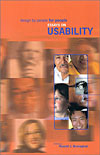 “design by people for people: Essays on Usability”
“design by people for people: Essays on Usability”
Edited by Russell J. Branaghan
http://www.upassoc.org/store/usability_essays.html
Whenever I need to dig into my personal usability library for advice, this is the first book I pick up. It’s a collection of the best essays published in the Usability Professionals’ Association’s former newsletter, Common Ground. The book is a composite of 27 essays on topics ranging from experience design to consulting, usability methods to conceptual modeling. UPA members get a $10 discount when purchased from the UPA site.
Brenda Janish
“Designing Web Usability”
Jakob Nielsen
According to B & A’s Christina Wodtke, a guru is a critic who prescribes rigid, oversimplified rules of website design. There is no better way to describe Jakob Nielsen, who uses “guru” four times on his biography page (http://www.useit.com/jakob/). “Designing Web Usability” is full of oversimplified rules, but those rules are backed up by years of research and a solid discussion.
Joshua Kaufman
In this book, Mr. Nielsen transcended the rigid guru role and became the teacher the web so desperately needed in 1999. He moves from observation to principal with clarity, bringing empathy to website design—and most of his insights are as valid now as ever. His earlier works are too academic, later works are too didactic, but this book—like the little bear’s goods in goldilocks—is just right. Mr. Nielsen’s finest hour in print.
Christina Wodtke
“E-commerce User Experience”
Nielsen Norman Group
“That’s just your opinion. Show us some research to back that up.” We’ve all heard that at some point when suggesting an interface change to improve usability. Well, these guys did the research so you don’t have to. The Nielsen Norman Group performed usability studies on a number of e-commerce sites, in a variety of industries, and published their findings in this amazingly easy-to-use (and heavy!) hardcover version of the “E-commerce User Experience” series of reports sold on their site. As a practicing IA, the 207 guidelines proposed aren’t surprising (although they do provide a nice structure for the book), but this is the book I reach for when a teammate, client or manager needs convincing of an interface change that might be hard for them to swallow (the Executive Summary in each chapter makes that task even easier). This book is well worth the hefty price tag, and will quickly become one of those books you store under lock and key with the label “secret weapon.”
Brenda Janish
“The Usability Engineering Lifecycle”
Deborah J. Mayhew
If you get only one hard-core book on user experience design, this is the one. Despite the title, it actually covers most of user experience design. While it trades breadth for depth, its one of the few books that acknowledges that not everyone has time to do things the “right” way, so it also covers how to scale-down methods from it’s “heavyweight” approach, as well as how to substitute quick-and-dirty alternatives. Mayhew is actually willing to put some time estimates on how long particular steps may take. The main weakness is its failure to address issues of content, information architecture, and visual design (the author does traditional software development), although at least the book acknowledges these may be important if you’re doing web-related projects.
George Olsen
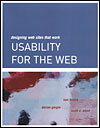 “Usability for the Web”
“Usability for the Web”
Tom Brinck, et al
Most usability books simply discuss the rules and guidelines of web usability. “Usability for the Web” not only discusses the rules and guidelines, it also shows you how to integrate them into the web design process. According to the authors, every stage in the design, from requirements gathering to post-launch is an opportunity to affect a site’s overall usability. To help you realize these opportunities, the authors have filled these pages with forms and checklists that enable you to easily incorporate their techniques into your current projects. This is a great book for web designers and project managers alike.
Joshua Kaufman
“Web Site Usability Handbook”
Mark Pearrow
Pearrow’s “Usability Handbook” is my how-to book of web usability. It covers many web usability topics including the usability toolbox, design guidelines, heuristic evaluation and usability testing. The Handbook is different than the aforementioned usability books because it reads more like a textbook, offering chapter summaries, hands-on exercises and discussion topics, which all help to make the book more of an exploration than straight read. If you’ve already read the rules and guidelines, and you’re looking for usability in practice, “Web Site Usability Handbook” is recommended.
Joshua Kaufman
Books for Writing Well
“Style: Ten Lessons in Clarity and Grace”
Joseph M. Williams
If inconsistent link labels make you cringe and jargon makes you angry, you need to get this book. It provides you with ten elegant strategies for refining and iterating the written word so that it makes sense for your audience. As you read, substitute the words “information architecture” for “writing” and watch the book transform into persuasive strategies to use in everyday IA work.
Liz Danzico
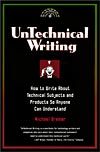 “Untechnical Writing: How to Write About Technical Subjects and Products So Anyone Can Understand”
“Untechnical Writing: How to Write About Technical Subjects and Products So Anyone Can Understand”
Michael Bremer
While this short book is written primarily for technical documentors—peoplewho write instruction manuals and guide books for software—IAs and the like will find it full of valuable tips, tools, and methods for organizing your thoughts, clarifying ideas and processes, and communicating them to users. Bremer also offers useful techniques and guidelines for more mechanical matters like collaborating with developers, creating effective page layouts, editing, even designing interfaces. A former Director of Creative Services at video game pioneer Maxis, Bremer writes in a casual, straight forward style, and intersperses his text with insightful, often humorous quotes from a variety ofnotable authors and pundits. If your job requires communicating complex ideas to normal people, read this book.
Ryan Olshavsky
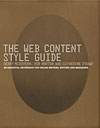 “The Web Content Style Guide”
“The Web Content Style Guide”
Gerry McGovern, Rob Norton & Catherine O’Dowd
When planning Boxes and Arrows, I found it nearly impossible to find a good style guide focused on online usage to resolve questions like “email” vs. “e-mail,” or defining “GSM.” WCSG filled that void.
George Olsen
Get it out of necessity; continue to use it out of love. While it’s not the Chicago Manual of Style or the Associated Press Stylebook, it doesn’t pretend to be. Current examples, techniques, and references make this book worth reading cover to cover.
Liz Danzico
Learning from Others
 “Crossing the Chasm”
“Crossing the Chasm”
“Inside the Tornado”
Geoffrey Moore
If you want to be ahead of the technology curve, learning more about Moore’s thoughts on the product lifecycle could be your lifeline to product and company success. Many of the practical ideas presented provide a good strategic edge for those wanting to learn more about product marketing and management and introducing high-tech products to the general public.
Madonnalisa Gonzales-Chan
 “From Barbie to Mortal Kombat: Gender and Computer Games”
“From Barbie to Mortal Kombat: Gender and Computer Games”
Justine Cassell and Henry Jenkins
Surprisingly easy to read for an academic publication, this collection of essays examines how assumptions about gender affect the design, development and marketing of computer games, and proposes approaches for avoiding the gender stereotyping prevalent in game designs today. Essential reading for video game programmers and designers, and helpful for anyone designing websites, e-learning, or interactive entertainment for children.
Brenda Janish
“Invention by Design: How Engineers Get from Thought to Thing”
Henry Petroski
Bring a pencil and a can of soda with you when you read this book. Petroski outlines how some of the most common inventions came to be through iterative product development. While we’ve been advocating for learning by example, competitive research, and iterative usability testing, engineers have been doing this for years to develop such wonders as pencils, aluminum cans, and paper clips.
Liz Danzico
“Making Movies Work”
Jon Boorstin
Re-titled and re-released after being long out of print, Boorstin offers a masterful analysis of how movies move us —from the “voyeur’s eye” for detail, logic and plausibility, to the “vicarious eye” attuned to emotional truth, to the “visceral eye” that takes in the gut reactions of the lizard brain. While written for filmmakers, with specifics from camera angles to film scoring, it’s still thought-provoking reading when thinking about the “experience” side of user experience.
George Olsen
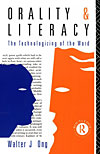 “Orality & Literacy: The Technologizing of the Word”
“Orality & Literacy: The Technologizing of the Word”
Walter J. Ong
Imagine what the world was like with no dictionaries, reference books, libraries, no Internet. A culture where words mean what they do relevant to individual situations. This kind of direct semantic ratification is still used in oral cultures today and is the foundation for all communication we are now familiar with. This book explains how each act of discourse, no matter what the modality, calls for our consciousness of the cultural implications affecting the exchange, as well as an awareness of our own cultural biases upon interpreting it.
Liz Danzico
“Radio: An Illustrated Guide”
Ira Glass and Jessica Abel
http://www.thislife.org/pages/trax/comic/comic_base.html
This 32-page black-and-white comic book, co-authored by NPR’s Ira Glass and cartoonist Jessica Abel, provides an inside look at how “This American Life” radio stories are researched, written and produced. Offered ostensibly as a primer for people who want to submit stories to the show, its unsung value is as a uniquely insightful analysis of what makes narrative compelling. A nice look at the elements of the “radio user experience” that can be applied to the medium of online storytelling as well. This belongs on your bookshelf next to Scott McCloud’s “Understanding Comics.”
Brenda Janish
 “Understanding Comics”
“Understanding Comics”
Scott McCloud
Who would think that a book called “Understanding Comics” would have anything to do what we do? Well, lose your cynicism and dive into Scott McCloud’s visual world. Learn some of the most important aspects of conveying information from a comic book artist. This terribly accessible book can be read in one or two sittings, and the knowledge gained makes it a must-read for any comic book enthusiast or anyone responsible for telling stories with pictures.
Liz Danzico
Books on Brand
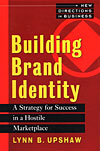 “Building Brand Identity”
“Building Brand Identity”
Lynn B. Upshaw
While Aaker gives you the big picture when it comes to brand strategy, Upshaw provides a more hands-on treatment that’s a good complement to “Building Strong Brands”. Like Aaker, Upshaw does take something of a top-down approach to brand strategy, although he emphasizes the importance understanding a brand through customers’ eyes.
George Olsen
“Building Strong Brands”
David A. Aaker
Like information architecture, branding has had difficulties clearly defining itself. However, it’s far more than just a catchy name and cool logo, branding is sum total of your customer’s experience with your company. Needless to say, user experience is an important part of that equation, so user experience architects should be familiar with how they fit into the larger issue of branding. Aaker offers a good introduction for novices and experts alike.
George Olsen
Books on Marketing
“Counter-Intuitive Marketing”
Kevin J. Clancy and Peter C. Kreig
Want to know why some many companies launch products that fail or pursue strategies that go nowhere? The authors offer an acid criticism of marketing as it’s too often practiced. Unfortunately, their solutions aren’t that practical except for the largest companies. They’re hard-core quantitative marketing research guys, so their answer to everything involves six months and six figures. Still they offer a compelling vision of how market research done well can complement user-centered design techniques.
George Olsen
“Selling the Invisible: A Field Guide to Modern Marketing”
Harry Beckwith
We’re often in the position of having to sell clients or colleagues on the intangible benefits of our skills. While Beckwith’s book is aimed at marketing, much of the advice is highly applicable to these situations.
George Olsen
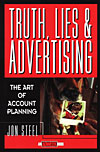 “Truth, Lies and Advertising: The Art of Account Planning”
“Truth, Lies and Advertising: The Art of Account Planning”
Jon Steel
A fun read about what’s known as “account planning” by the man behind the “Got Milk?“ ads and other memorable ad campaigns. Account planners at ad agencies play a role that’s quite similar to user researchers and user experience strategists. They seek to deeply understand customers needs, wants and desires in order to prepare the creative brief. Not much in the way of practical details, but enjoyable and quite useful if you’re dealing with people from an ad agency background.
George Olsen
Books on Business
“Business and Finance for IT People”
Michael Blackstaff
Like sales, accounting is one of those things most user experience professionals probably avoided in school. Yet it’s critical to understanding business managers’ concerns about the bottom line. Blackstaff walks you painlessly (okay, relatively painlessly) through the subject in plain language, using good analogies of how business balance sheets compare to your own finances and explaining the specifics of ROI calculations. Unfortunately, it doesn’t cover “managerial accounting,” the kind of recordkeeping used to track operations—which is probably even more valuable to know. If you get satellite TV, the “Accounting in Action” telecourse on the PBS You channel includes an approachable introduction to managerial accounting.
George Olsen
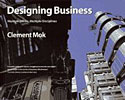 “Designing Business: Multiple Media, Multiple Disciplines”
“Designing Business: Multiple Media, Multiple Disciplines”
Clement Mok
In his chapter on Information Design, Mok reveals the subtleties of design disciplines—distinguishing information arts, information design, and information architecture from one another through a visually rich comparison to traditional offline examples. Whether you’re a practicing experience design professional or a colleague of one, this book gives you a common vocabulary to discuss design strategy.
Liz Danzico
“Design Management Institute Journal”
While this isn’t a book, I highly recommend subscribing to the DMI quarterly journal. You can subscribe without becoming a member. This group focuses not only on the design manager but also on the role of design in business. This is the big design—industrial, product, interactive, etc. If you are interested in how the work you do affects business —and vice versa—this journal is a must-read.
Erin Malone
“The Harvard Business Review”
A valuable collection of thoughtful and well-written white papers, with a surprising number of articles that are applicable to user experience (even if they’re not labeled as such). But more importantly, HBR offers a good way to keep up on current trends in business thinking—helpful if you’ve got to sell user experience to bosses or clients—as well as a good way to learn more about management skills and general business skills. No it’s not cheap, but it’s definitely worthwhile.
George Olsen
Books for Consultants
“Flawless Consulting – A guide to getting your expertise used”
Peter Block
Ever worked with a client and offered your expert advice, only to find out later that they totally ignored it? This book offers advice on how to get others to take that advice and respect your expertise. Although I don’t freelance much any more, this advice can be as useful in-house as with external clients.
Erin Malone
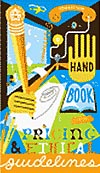 “Graphic Artist’s Guild Pricing & Ethical Guidelines”
“Graphic Artist’s Guild Pricing & Ethical Guidelines”
Graphic Artist’s Guild
This book is put out every year by the Graphic Artist’s Guild.
The book defines every role and discipline you could imagine in the design world and the new media world—designer, illustrator, web designer, art director, creative director, HTML production, etc. The book includes salary information collected from national surveys as well as pricing information for various types of projects in different size markets. I have found this to be a godsend when having to estimate projects for new clients. It also contains great contracts and other documents that you can use in your freelance business. If you freelance or work for yourself, you MUST own this book.
Erin Malone
“Secrets of Consulting: A Guide to Giving and Getting Advice Successfully”
Gerald M. Weinberg and Virgina Satir
Invaluable advice for those in the business of providing advice. While the focus is on independent consultants, much of it is equally applicable for those working in-house. Witty and memorable anecdotes illustrate how to figure out what the real problems are and how to carefully give and receive advice.
George Olsen
“SPIN Selling”
Neil Rackham
Forget the plaid polyester suits, Rackham observed 35,000 sales calls and proved that the sales techniques commonly taught are usually counter-productive for high-value purchases—like hiring consultants. Instead Rackman focuses on consultative sales approach, focused on understanding the needs of your customer. If you’re a consultant, the advice is invaluable to making a living. If you’re not, Rackman’s approach dovetails nicely with user-centered design and gives you a way to make allies out of your sales staff.
George Olsen
Books about Management or for Managers
“Collaborative Web Development: Strategies and Best Practices for Web Teams”
Jessica Burdman
When it comes to the nitty-gritty details of web design, like scoping projects, setting up workflow, and managing team dynamics, this book by Jessica Burdman is an invaluable reference. Not only does it thoroughly cover essential management aspects of the design and development process, but Ms. Burdman has also graciously included a CD-ROM of templates of the deliverables she mentions in the book. Great reference if you’re just setting up shop, or are looking for documentation to support an existing process.
Brenda Janish
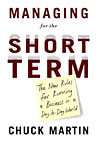 “Managing for the Short Term”
“Managing for the Short Term”
Chuck Martin
I just started reading this, so my review is based on the first chapter. Needless to say, these days bosses and clients are looking for clear and immediate results. This book looks like it gives you a good picture of the pressures they’re facing.
George Olsen
“Quality Software Management: Anticipating Change”
Gerald M. Weinberg
User experience professionals often act as change agents whether they want to or not. One of the wisest consultants I know shows how to deal with organizational change in this book, the last of a four-volume series that pulls together his decades of experience. If you like this, I highly recommend the other books in the series, as well as “Becoming a Technical Leader,” which despite its title is applicable for anyone seeking to improve their people skills. Don’t be put off by the titles, they were purposely “geeked up“ to make these human-focused books appeal to the software engineering market.
George Olsen
“What Management Is: How It Works and Why It’s Everyone’s Business”
Joan Magretta
Written by a former editor of the “Harvard Business Review,” it provides a quite readable primer on what management is all about. Consequently it’s a must-read for user experience professionals, so they can understand how user experience fits into the bigger picture of business. Rather than getting bogged down in the how, the book focuses on the “what” and the “why” of the core principles of management. It also gives good attention to the management of non-profits.
George Olsen
Managing Your Career
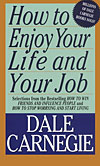 “How to Enjoy Your Life and Your Job”
“How to Enjoy Your Life and Your Job”
Dale Carnegie
From the man who brought you “How to Win Friends and Influence People”, this sappy, sentimental, often times over the top with positive enthusiasm, book will remind you that you can have it all. Common sense advice—that we often forget—on handling difficult people and situations that will go a long way to keeping you happy in your life and career.
Erin Malone
“Managing Transitions – Making the Most of Change”
William Bridges
In today’s fast moving, ever changing economy, this book is just the ticket to help understand how you react to constant change—most specifically in the workplace. The author offers various tools and techniques for helping people carry out change. This is an excellent book if you have employees, but it is just as useful if you are the employee who not only has to accept change, but implement it as well.
Erin Malone
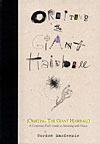 “Orbiting the Giant Hairball – A corporate fool’s guide to surviving with grace”
“Orbiting the Giant Hairball – A corporate fool’s guide to surviving with grace”
Gordon MacKenzie
Whimsical and irreverant, this book is full of advice your boss will never tell you. The author, a former creative director at Hallmark, offers advice for how folks within the corporate world can unleash their creativity despite the bureaucracy of the corporation. MacKenzie shares personal experiences and advice for inspiring corporate colleargues to find their lost child self. It is full of funny illustrations and a quick read. Get it for yourself, a coworker or even your boss.
Erin Malone

very nicely done
here’s my list: http://www.librarything.com/catalog/lauriekalmanson
This is an exceptional list. I know it is significant because one of your choices, “Spin Selling” by Neil Rackham, increased my income at work by at least 25%. “The Tipping Point” by Malcolm Gladwell is eye-opening. A delicious book to read and always a comfortable one is “Little Gifts of Sustainable Contentment” by C.J. Good. Her writing is so beautiful and authentic that I think some people may be bewildered by how challenging it is. I think it is a book one is likely to fall in love with if approached with an open sense of inquiry. A must have for any cozy hotel or bed and breakfast library.
A Great List! Nicely done, folks.
Books I’d add:
Steve McConnell: Software Project Survival Guide. The book I turn to again and again to explain why the problem with quick & dirty is that DIRTY is remembered loooooooooong after QUICK is forgotten.
Karen Shriver: Dynamics in Document Design. Still the most authoritative document design book, combining rigorous research with practical advice. Helpful for folks who have to produce client-facing documentation.
Eric Reiss: Practical Information Architecture: A Hands-On Approach to Structuring Successful Websites. A nice short intro to IA and a good book to pass on to clients whose eyes glaze over when you’re explaining subsites and metatagging…
Marlana Coe: Human Factors for Technical communicators. I came into the IA/UX world through tech writing, largely influence by Coe’s great intro to the field. Nice to have a good compendium of cog sci stuff related to software.
And of course the new ones by Christina and Jesse James–both of which I’m enjoying immensely.
joe
I’ll second Joe’s recommendation of Steve McConnell’s and Karen Shriver’s books — I would’ve included them myself, I just overlooked them.
Shriver’s book is one of the few I’ve seen that taken an in-depth look at how text and visual design interact — probably because the author is a both a designer and a writer.
I’d also highly recommend McConnell’s “Rapid Development.” Aside from offering great advice for an iterative development approach, McConnell offers a powerful round-up of the typical problems plaguing lots of projects.
I think this list is GREAT!!!!
Additions to the list:
Invisible Computer by D. Norman – This book will be great for people who struggle like I do with putting everything in there software creation. Its time to segregate and communicate as opposed to complete and confuse.
Being Digital – N. Negronponte – This is a great sociological look at changes in technology from atoms to bits.
A Pattern Language – C. Alexander – Learning and exploring patterns in the physical world to help us create patterns in the virtual.
Experience Design – N. Shredoff – Experience Design is a key piece for us and I’m a bit surprised this one wasn’t in the original list.
Leonardos Laptop – B. Sneiderman – a good book. What can I say I liked it.
Humane Interface – J. Raskin – another one I am surprised didn’t make the cut.
I also think we need to add a section of this list towards the inspirational, and to include things that are not books per se, or are books that tell us something about our industry but from a strange point of view. e.g.
Neuromancer by W. Gibson
Johnny Neumonic by W. Gibson
Star Trek TNG +
The Matrix (the movie)
Minority Report (the movie)
AI (the movie)
These have interfaces that while imaginative and not built in the real, are sources for input to what we can make real.
Other sources would include architecture like Geary and Wright and others that teach us about space, navigation and wayfinding in the physical.
Ok I think I can go on and on here. 😉
Happy Chanukah!
I’ll second the inclusion of McConnell’s books in the list, though I’d add also “Code Complete”.
I wonder why John Cato’s book, “User-Centered Web Design”, hasn’t been included. It’s a must.
And I’ll definitely would like the list to include Joel Spolsky’s “User Interface Design for Programmers”.
These guys can write. And teach. If only we’d learn…
For anyone looking for a user interface design book that offers techniques with an object-oriented flavor, (in fact, a definite UML flavor) see:
“Object Modeling and User Interface Design” (2001) Mark Van Harmelen, Editor.
It is an excellent survey of methods from leading practitioners. Have you ever been flummoxed by “Use Cases”? Three chapters describe suitable methods for using them effectively.
…and although I do have a place in my heart for the UPA, I found the book, “Designing by People for People: Essays on Usability” to be unsubstantial and dated. Meritable collections of essays require a larger pool than that of a young society’s periodic newsletter.
I would add two books to this excellent list: “Vocabulary Control for Information Retrieval,” by F.W. Lancaster. This book is less technical than “Thesaurus Construction and Use,” by Jean Aitchison, Alan Gilchrist and David Bawden. (The Lancaster book may be out of print. I have the second ed., 1986, published by Information Resources Press). I also recommend “Website Indexing: enhancing access to information within websites” by Glenda Browne and Jonathan Jermey (published by Auslib Press, Adelaide, 2001). Much of the book is devoted to back-of-the-book style website indexes, but it also includes some very helpful material on the information architecture of websites, including hierarchies and navigation structures.
WOW! This list is amazing…and I thought there were no more cool books to read. How wrong I was! Thanks for posting this. The circular paper charts book is #1 on my list. Now, where is that 1-click-to-add-everything-to-my-Amazon-shopping-cart button?
….uh, might need bit of a discount with that. Or an installment plan.
Either way, this is a fantastic bibliography for all of us. Thanks!
Charlie B.
Sr. IA/AGENCY.COM/SF
I would highly recommend Set Phasers on Stun by Steven M. Casey. It is a collection of true stories blamed on “human error”. It is clear as you read the stories that design decisions are the root of the problems. It’s a quick, easy and fun read.